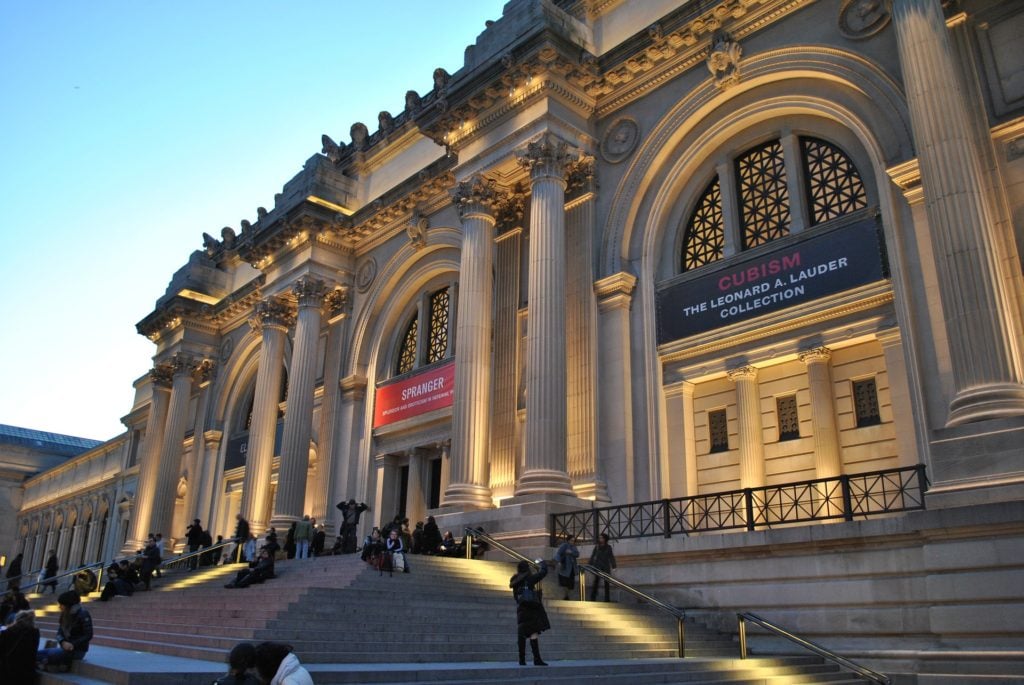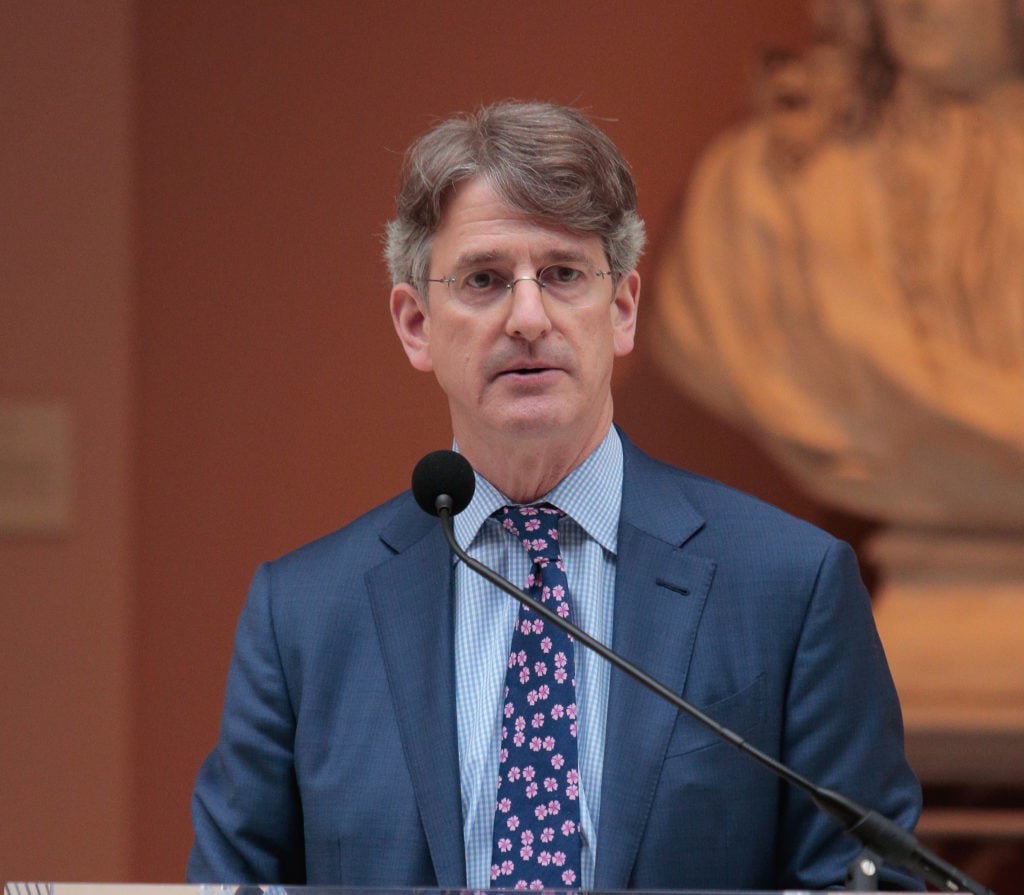Art World
Will the Met Museum Sell the Luxurious Fifth Avenue Apartment Where Thomas Campbell Lived?
A perk once used as an incentive for top talent may now become a financial asset.

A perk once used as an incentive for top talent may now become a financial asset.

Eileen Kinsella

The job of director of New York’s Metropolitan Museum of Art may be getting just a little less cushy.
As the prestigious institution continues to grapple with a years-long budget deficit, executives have homed in on the pricey Fifth Avenue apartment long used to house its director—a major, tax-free perk. A museum representative said leaders are considering selling the apartment, but that no final decision has been made yet.

Thomas Campbell at the “Manus x Machina: Fashion In An Age Of Technology” press conference in May 2016. (Photo by Randy Brooke/Getty Images)
Former director Thomas Campbell, who officially stepped down in June 2017, lived there during his tenure as director, which began in 2009.
In a town as pricey as New York, the rent-free apartment amounts to a considerable bonus—and offers an additional place to entertain the museum’s most important donors. According to the Met’s most recent tax filings (for the fiscal year that ended June 30, 2017), Campbell earned a salary of $1.07 million, plus other compensation—including the housing consideration—worth $359,670. The filings for the previous year (which ended June 30, 2016) lists nearly identical compensation.
While the museum searches for a new director, the Met’s president and CEO Daniel Weiss has been occupying the role on an interim basis since mid-2017. (After a management reshuffle, the incoming director will report to Weiss, a change from previous regimes.) Weiss’s compensation, as reported in the latest fiscal year, was listed as $842,000, plus nearly $60,000 in additional compensation, for a total of $901,671. That was up from $781,939 and $36,173 in the prior fiscal year, for a total of $818,112 in the fiscal year that ended in June 2016.
The current market value of the Fifth Avenue apartment has not yet been assessed for the museum, but a 2010 report in the New York Times about tax-free housing for New York museum directors estimated that the co-op, directly across from the museum, was worth $4 million.
The apartment, located at 993 Fifth Avenue, between 80th and 81st streets, is directly across from the Met. Campbell is still listed as the current owner and real estate records show the last transfer of ownership was in 2009—the year he became director—when Campbell took possession of the apartment for a fee of $10.
That’s not a typo.
The previous owner was listed as former Met president Emily Rafferty, who took the helm in 2005. That year is also the last on record for an ownership transfer in the same amount of $10. A luxury real estate executive artnet News consulted says based on comparable sales in the building, he would price the current apartment at approximately $8 million were it to be placed on the market.
The Met’s representative could not say whether a future director would be offered an alternate housing subsidy or residence as incentive to take the job. As has been reported in the past, real estate incentives are important components of other top Manhattan museum directors’ compensation packages. According to the same 2010 report in the New York Times, Museum of Modern Art director Glenn Lowry’s $2 million in salary and benefits at the time includes provision for residing in a condo in the adjacent Museum Tower that was then priced at $6 million.
According to a more recent 990 filing from MoMA, for the fiscal year ended mid-2016, Lowry’s compensation was $1.2 million and “additional compensation” is listed at $984,275 for a total of just under $2.2 million.
It is not yet clear how proceeds from a potential sale of the Met’s real estate would be used. The funds would not be subject to the same restrictions as sales of art. Under the guidelines of professional organizations including the American Alliance of Museums (AAM) and the Association of Art Museum Directors (AAMD), any funds realized from sales of artwork must be put towards future acquisitions.
Meanwhile, the Met’s deaccessioning activity in the most recent fiscal year was up considerably, to $13.3 million—a record, according to the New York Post. The museum spokesperson described the figure as nothing unusual and said the bulk of the material sold was Chinese porcelain. For comparison, deaccessions in the fiscal year 2016 generated a total of $4.9 million, less than half the latest sum.
If the apartment fetches a price in the neighborhood of the NYT‘s estimate, it would generate a little less than half the average amount of money the museum expects to raise from one year of its new admissions scheme.
Less than two weeks ago, on March 1, the museum officially began charging visitors from outside the tri-state area a mandatory fee of $25. The highly controversial move is expected to add an additional $6 million to $11 million to the museum’s operating budget each year.